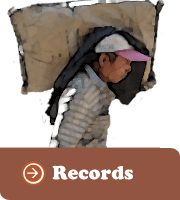
Introduction to transportation
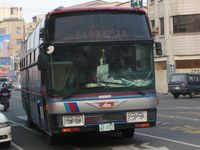
Transport car
(Source: photographed by the team)
Since establishment of the Chia-yi Charity Organization, it has always quietly done good works without asking for government subsidies; it only uses the hundred dollar donations to create its miracles. Since the cost for construction materials could not be adjusted, the transportation problems of volunteers had always been overcome with the meanest ways. Even though there are now three transport cars (Kaohsiung, Chiayi, Dounan), but the cars are still not good. Now, we introduce the transportation conditions of the Chia-yi Charity Organization from the beginning; many interesting stories have taken place in the evolution process.
 Evolution process of the transport cars
Evolution process of the transport cars
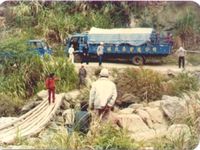
Transport car(Before)
(Source: Chia-yi City Chia-yi Charity Organization)
The different types of cars are shown as follows:
- Rock trucks: this is the first transportation vehicle that transported volunteers; before this the volunteers had to take the bus on their own to the work sites.
- Delivery cars: Mr. Tseng Maosen was a delivery driver from the north to south, and each Sunday would drive the volunteers back and forth.
- Old buses: the current transport vehicles, also the most convenient vehicles up to this point (see appendix).
 Serendipities
Serendipities
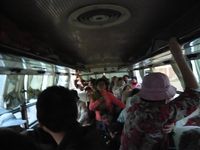
Crowded transport cars
(Source: photographed by the team)
At the beginning, the inner city needed a transport car desperately, but due to economic considerations, they had to purchase a second-hand car for 90,000 NT dollars (price at the time). The team leader went to the site to drive it back. By chance, an advertiser happened to pass by; after asking about the actions of Chia-yi Charity Organization and the price, he immediately agreed to pay for the car. After this, since the wheels are old, the team leader took the car to the repair shop for new wheels. By chance, the uncle of the repair shop owner heard about the purpose of the transport car, and said, “I’ll pay for it!” He became another important person for the Chia-yi Charity Organization.
 Taiwan Power Company frights
Taiwan Power Company frights
Early on, Taiwan Power Company had provided transport cars, but they stopped one week later. This was because too many people came to build bridges; it not overloaded, but some people were hanging out of cars like in a circus. The old people of the Charity Organization did not mind at all, but Taiwan Power Company did not dare to bear such responsibilities, and no one wanted to be the driver.
 Current conditions and the future of transport cars
Current conditions and the future of transport cars
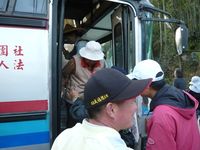
Getting on and off the car
(Source: photographed by the team)
Regardless of holidays or typhoons, the number of people on the transport cars is always overloaded. Things are even worse for Kaohsiung volunteers; the car departs at 5, and they would have to get up and prepare at 3 or 4. When work is completed at 12, they would have to go back to Kaohsiung while repairing roads, arriving at home at nearly 3 in the afternoon; such spirit is worthy of great admiration.
 Note:
Note:
Currently, Chia-yi Charity Organization has three transport cars, which take volunteers to the work sites each Sunday. Details are shown as follows:
Car |
Departure time |
Departure location |
Path |
Number of people |
Source of costs |
1 |
7:00 |
Dounan |
Dounan→Dalin →Minhsiung→work site |
Over 40 people |
From the government stipulated 5% of the public fund, monthly costs (gas, fuel, repairs) are as high as 60,000 |
2 |
Periodic, from Minzu Elementary School at 7:00 |
Chiayi City Gymnasium |
City (pickups en route) |
Over 40 people |
|
3 |
5:00 |
Kaohsiung City |
Does not stop after departure, the return trip depends on road repair needs |
Around 40 people |
Gas money and driver wages are paid by the passengers; each passenger pays 100 NT dollars |
(Reference resources: The narration of Chief secretary, the book“憨人造大橋”and written by our group after the research)

